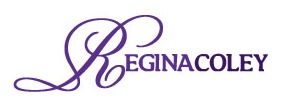The world is becoming increasingly diverse. In fact, the U.S. Census Bureau forecasts that by 2044, America will be a majority-minority country: No single ethnic group will have a clear majority of the population. This is an important change—one that can affect everything from planning our infrastructure to writing new books to teaching in our classrooms. There are many different types of diversity; however, one of the most important aspects is culture. Any classroom teacher needs to be at least somewhat familiar with different cultures and methods for multicultural teaching to build culturally relevant lessons for their students.
The Importance of Building A Culturally Relevant Curriculum
There is an ongoing debate about whether or not our nation’s students are learning enough about the culture of their community. The answer depends largely on who you ask and what your definition of learning is.
For example, many teachers argue that they do not have adequate resources to help them teach their students how to better understand the diversity within their classrooms and communities. On the other hand, parents may feel as if their children are being indoctrinated with propaganda regarding certain cultures while ignoring others.
Even though these two sides may seem at odds with one another, there is one thing they can agree upon: A culturally relevant curriculum is vital for all learners in contemporary society because it equips them with tools needed for success in college and beyond.
Developing a Culturally Relevant Curriculum in Your Classroom
Developing a culturally relevant curriculum in your classroom is an important step to help students feel that they have a connection with the subject matter. There are ways to incorporate this into your lesson plans, and it does not have to be difficult or time-consuming.
When you begin planning for your class, think about what topics will be taught throughout the year. Are there any holidays or events that are celebrated by certain cultures? If so, pick those out and create activities around them that are meaningful and interesting. For example, if you know some of your students will celebrate Hanukkah during December because they come from Jewish families, plan ahead by researching what foods they eat during this holiday season as well as traditional songs or prayers associated with it. This research could also be helpful if you want to incorporate Native American culture into your lessons—for example by learning how tribes used horses in their culture instead of cars like we do today!
Technology and the Multicultural Classroom
Technology can be used to teach about different cultures in a way that is fun. The use of technology in the classroom allows students to connect with their culture, as well as learn about other cultures. Technology has become a part of everyday life for today’s students and teachers need to incorporate this into their curriculum to reach all learners. Show videos, play music, video conference with people from other countries and continents.
Techniques to Teach Multicultural Lessons
Now that the pedagogical framework has been established, it is time to begin teaching lessons. One technique for doing this is to use a variety of teaching methods. Teachers can use lectures, group discussions or small-group activities, guest speakers and field trips to teach multicultural lessons. Another technique is to use a variety of teaching materials such as textbooks and films. Another method uses various teaching styles such as didactic lecturing or Socratic questioning in order to engage students in learning about other cultures from around the world. Finally, teachers should employ their best classroom management strategy so that their classes may run smoothly without disruption from students who refuse certain cultural viewpoints because they do not agree with them personally.
Another way that teachers have successfully taught multicultural lessons involves using multiple approaches at once instead just one style at a time.
Learning about different cultures can help us all live more harmoniously.
Learning about different cultures can help us all live more harmoniously.
The first step to teaching about different cultures is for teachers and students to be aware of their own cultural identity, values and beliefs. This can be achieved by engaging in classroom activities such as: games, discussions and storytelling that engage students in thinking about what it means to be a member of their own community. Teachers should also consider using technology as an effective way of introducing students to new experiences while promoting learning through digital literacy skills.
We have discussed some of the implications that a culturally competent curriculum could have on our classrooms. While there is still much work to be done in order for this type of education system to become more widespread and common than it currently is, it is clear that students across America would benefit greatly from engaging with diverse perspectives and learning about different cultures through the lens of an experienced teacher. It will take dedicated teachers who are willing to learn how they can incorporate these ideas into their own teaching practices as well as administrators committed to providing resources for them but we believe these changes are possible if everyone works together towards common goals.
